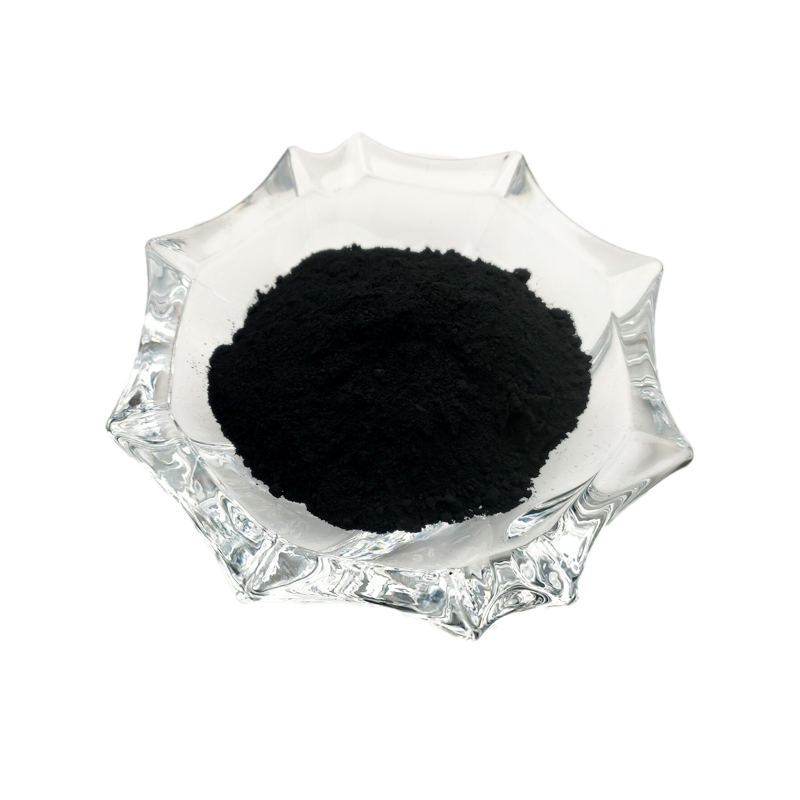What is silver oxide? what is it used for ?
Product name: silver oxide
CAS:20667-12-3
Molecular formula: Ag2O
Molecular weight: 231.73
Chinese name: Silver oxide
English name: Silver oxide; Argentous oxide; silver oxide; disilver oxide; silver oxide
Quality standard: ministerial standard HGB 3943-76
Physical property
Phe chemical formula of silver oxide is Ag2O, with a molecular weight of 231.74. Brown or grayish black solid, with a density of 7.143g/cm, rapidly decomposes to form silver and oxygen at 300 ℃. Slightly soluble in water, highly soluble in nitric acid, ammonia, sodium thiosulfate, and potassium cyanide solutions. When the ammonia solution is used up, it should be treated in a timely manner. Prolonged exposure can precipitate highly explosive black crystals - silver nitride or silver sulfite. Used as an oxidant and glass colorant. Prepared by reacting silver nitrate solution with sodium hydroxide solution.
Brown cubic crystalline or brown black powder. Bond length (Ag O) 205pm. Decomposition at 250 degrees, releasing oxygen. Density 7.220g/cm3 (25 degrees). The light gradually decomposes. React with sulfuric acid to produce silver sulfate. Slightly soluble in water. Soluble in ammonia water, sodium hydroxide solution, dilute nitric acid, and sodium thiosulfate solution. Insoluble in ethanol. Prepared by reacting silver nitrate solution with sodium hydroxide solution. Wet Ag2O is used as a catalyst when replacing halogens with hydroxyl groups in organic synthesis. Also used as a preservative and electronic device material.
Chemical property
Add a caustic solution to the silver nitrate solution to obtain it. Firstly, a solution of silver hydroxide and nitrate is obtained, and silver hydroxide decomposes into silver oxide and water at room temperature. Silver oxide begins to decompose when heated to 250 ℃, releasing oxygen, and rapidly decomposes above 300 ℃. Slightly soluble in water, but highly soluble in solutions such as nitric acid, ammonia, potassium cyanide, and sodium thiosulfate. After prolonged exposure to its ammonia solution, strong explosive black crystals may sometimes precipitate - possibly silver nitride or silver iminide. In organic synthesis, hydroxyl groups are often used to replace halogens or as oxidants. It can also be used as a colorant in the glass industry.
Preparation method
Silver oxide can be obtained by reacting alkali metal hydroxide with silver nitrate. [1] The reaction first generates highly unstable silver hydroxide, which immediately decomposes to obtain water and silver oxide. After washing the precipitate, it must be dried at less than 85 ° C, but it is very difficult to remove a small amount of water from the silver oxide in the end because as the temperature increases, the silver oxide will decompose. 2 Ag+ + 2 OH− → 2 AgOH → Ag2O + H2O.
Basic use
Mainly used as a catalyst for chemical synthesis. It is also used as a preservative, electronic device material, glass colorant, and grinding agent. Used for medical purposes and as a glass polishing agent, colorant, and water purifier; Used as a polishing and coloring agent for glass.
Application scope
Silver oxide is the electrode material for silver oxide batteries. It is also a weak oxidant and weak base in organic synthesis, which can react with 1,3-disubstituted imidazole salts and benzimidazole salts to generate azenes. It can replace unstable ligands such as cyclooctadiene or acetonitrile as carbene transfer reagents to synthesize transition metal carbene complexes. In addition, silver oxide can convert organic bromides and chlorides into alcohols at low temperatures and in the presence of water vapor. It is used in conjunction with iodomethane as a methylation reagent for sugar methylation analysis and Hoffman elimination reactions, as well as for the oxidation of aldehydes to carboxylic acids.
Security information
Packaging level: II
Hazard category: 5.1
Dangerous goods transportation code: UN 1479 5.1/PG 2
WGK Germany:2
Hazard category code: R34; R8
Safety instructions: S17-S26-S36-S45-S36/37/39
RTECS number: VW4900000
Dangerous goods label: O: Oxidizing agent; C: Corrosive;
Post time: May-18-2023
